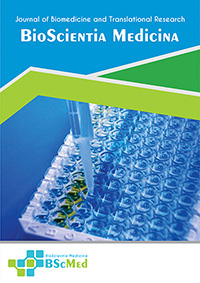Main Article Content
Abstract
Background: The surgical management of persistent or recurrent primary hyperparathyroidism (PHPT) is critically dependent on accurate preoperative localization of ectopic or residual hyperfunctioning glands within a scarred anatomical field. While 18F-Fluorocholine Positron Emission Tomography/Computed Tomography (18F-FCH PET/CT), four-dimensional computed tomography (4D-CT), and 99mTc-Sestamibi scintigraphy are employed, a definitive evidence-based hierarchy to guide their use is absent. This study aimed to establish this hierarchy by comparing their diagnostic performance through a network meta-analysis.
Methods: A systematic search of PubMed, Embase, and Scopus was conducted for comparative studies published between January 2015 and August 2025 evaluating these modalities in persistent/recurrent PHPT. A Bayesian bivariate network meta-analysis was performed to calculate pooled sensitivities and specificities on both a per-patient and per-lesion basis. Modalities were ranked using Surface Under the Cumulative Ranking (SUCRA) scores. Methodological quality, inconsistency, and heterogeneity were formally assessed.
Results: Seven studies involving 687 patients were included. On a per-patient analysis, 18F-FCH PET/CT demonstrated the highest sensitivity at 94.1% (95% Credible Interval [CrI]: 89.8%–97.5%), significantly outperforming 4D-CT (82.5%; 95% CrI: 75.1%–88.9%) and scintigraphy with SPECT/CT (60.3%; 95% CrI: 51.2%–69.1%). Specificities were uniformly high. Per-lesion analysis confirmed this hierarchy. SUCRA rankings identified 18F-FCH PET/CT as the superior modality for both per-patient (98.7%) and per-lesion (99.1%) detection. No significant network inconsistency was detected.
Conclusion: 18F-FCH PET/CT exhibits superior diagnostic accuracy for localizing culprit parathyroid glands in persistent or recurrent PHPT. Its performance, grounded in robust metabolic targeting that overcomes the challenges of a reoperative field, supports its positioning as the primary imaging modality in this setting. These findings advocate for a revision of current diagnostic algorithms to enhance surgical planning and improve patient outcomes.
Keywords
Article Details
As our aim is to disseminate original research article, hence the publishing right is a necessary one. The publishing right is needed in order to reach the agreement between the author and publisher. As the journal is fully open access, the authors will sign an exclusive license agreement.
The authors have the right to:
- Share their article in the same ways permitted to third parties under the relevant user license.
- Retain copyright, patent, trademark and other intellectual property rights including research data.
- Proper attribution and credit for the published work.
For the open access article, the publisher is granted to the following right.
- The non-exclusive right to publish the article and grant right to others.
- For the published article, the publisher applied for the Creative Commons Attribution-NonCommercial-ShareAlike 4.0 International License.





